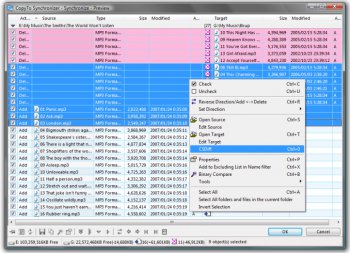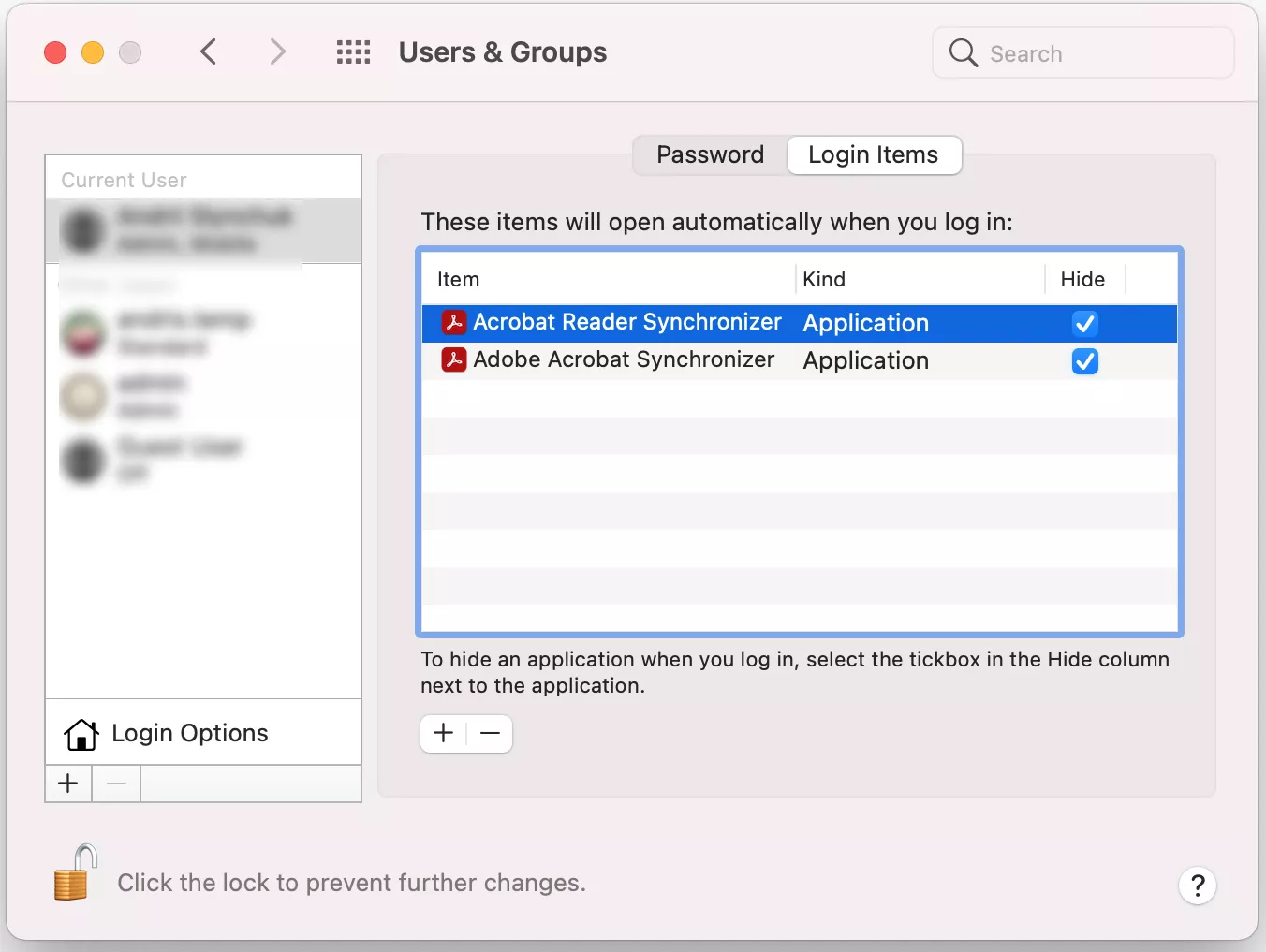-->
Jonathon Wodnicki 'My favorite thing about Adobe Experience League is just the expertise you see on display. People from all backgrounds, across the world offer a diverse range of opinions and answers on all sorts of questions.'
Harassment is any behavior intended to disturb or upset a person or group of people. Threats include any threat of suicide, violence, or harm to another. Explore the Adobe Exchange App Marketplace. Thousands of apps to enhance your experience with products across all Adobe Clouds. Discover and install extensions that expand and enhance your creativity. Extend the value of Adobe Experience Cloud through third-party applications. Speed your business by using Adobe Sign partner integrations in your. I have been experiencing much lower battery time remaining estimates on my 13' MBA Ultimate. Looking at iStat Nano shows that I have 'Adobe Resource Synchronizer' eating up 82% (of what?) in processes. A search on this site turns up nothing and a search on Google shows little, except that people are really peeved that. Jun 02, 2021 The User Sync tool is a command-line utility that moves user and group information from your organization’s enterprise directory system (such as an Active Directory or other LDAP systems) to your organization’s directory in the Adobe Admin Console.
In this tutorial, you'll learn how to integrate Adobe Sign with Azure Active Directory (Azure AD). When you integrate Adobe Sign with Azure AD, you can:
- Control in Azure AD who has access to Adobe Sign.
- Enable your users to be automatically signed-in to Adobe Sign with their Azure AD accounts.
- Manage your accounts in one central location - the Azure portal.
Prerequisites
To get started, you need the following items:
- An Azure AD subscription. If you don't have a subscription, you can get a free account.
- Adobe Sign single sign-on (SSO)-enabled subscription.
Scenario description
In this tutorial, you configure and test Azure AD single sign-on in a test environment.
- Adobe Sign supports SP initiated SSO
Add Adobe Sign from the gallery
To configure the integration of Adobe Sign into Azure AD, you need to add Adobe Sign from the gallery to your list of managed SaaS apps.
- Sign in to the Azure portal using either a work or school account, or a personal Microsoft account.
- On the left navigation pane, select the Azure Active Directory service.
- Navigate to Enterprise Applications and then select All Applications.
- To add new application, select New application.
- In the Add from the gallery section, type Adobe Sign in the search box.
- Select Adobe Sign from results panel and then add the app. Wait a few seconds while the app is added to your tenant.
Configure and test Azure AD SSO for Adobe Sign
In this section, you configure and test Azure AD single sign-on with Adobe Sign based on a test user called Britta Simon.For single sign-on to work, a link relationship between an Azure AD user and the related user in Adobe Sign needs to be established.


To configure and test Azure AD single sign-on with Adobe Sign, you need to perform the following steps:
- Configure Azure AD SSO - to enable your users to use this feature.
- Create an Azure AD test user - to test Azure AD single sign-on with Britta Simon.
- Assign the Azure AD test user - to enable Britta Simon to use Azure AD single sign-on.
- Configure Adobe Sign SSO - to configure the Single Sign-On settings on application side.
- Create Adobe Sign test user - to have a counterpart of Britta Simon in Adobe Sign that is linked to the Azure AD representation of user.
- Test SSO - to verify whether the configuration works.
Configure Azure AD SSO
Adobe Resource Synchronizer Mac Startup
In this section, you enable Azure AD single sign-on in the Azure portal.
To configure Azure AD single sign-on with Adobe Sign, perform the following steps:
In the Azure portal, on the Adobe Sign application integration page, select Single sign-on.
On the Select a Single sign-on method dialog, select SAML/WS-Fed mode to enable single sign-on.
On the Set up Single Sign-On with SAML page, click pencil icon to open Basic SAML Configuration dialog.
On the Basic SAML Configuration section, perform the following steps:
a. In the Sign on URL text box, type a URL using the following pattern:
https://<companyname>.echosign.com/b. In the Identifier (Entity ID) text box, type a URL using the following pattern:
https://<companyname>.echosign.comNote
These values are not real. Update these values with the actual Sign on URL and Identifier. Contact Adobe Sign Client support team to get these values. You can also refer to the patterns shown in the Basic SAML Configuration section in the Azure portal.
On the Set up Single Sign-On with SAML page, in the SAML Signing Certificate section, click Download to download the Certificate (Base64) from the given options as per your requirement and save it on your computer.
On the Set up Adobe Sign section, copy the appropriate URL(s) as per your requirement.
Create an Azure AD test user
In this section, you'll create a test user in the Azure portal called B.Simon.
- From the left pane in the Azure portal, select Azure Active Directory, select Users, and then select All users.
- Select New user at the top of the screen.
- In the User properties, follow these steps:
- In the Name field, enter
B.Simon. - In the User name field, enter the username@companydomain.extension. For example,
B.Simon@contoso.com. - Select the Show password check box, and then write down the value that's displayed in the Password box.
- Click Create.
- In the Name field, enter
Assign the Azure AD test user
In this section, you'll enable B.Simon to use Azure single sign-on by granting access to Adobe Sign.

- In the Azure portal, select Enterprise Applications, and then select All applications.
- In the applications list, select Adobe Sign.
- In the app's overview page, find the Manage section and select Users and groups.
- Select Add user, then select Users and groups in the Add Assignment dialog.
- In the Users and groups dialog, select B.Simon from the Users list, then click the Select button at the bottom of the screen.
- If you are expecting a role to be assigned to the users, you can select it from the Select a role dropdown. If no role has been set up for this app, you see 'Default Access' role selected.
- In the Add Assignment dialog, click the Assign button.
Configure Adobe Sign SSO
Before configuration, contact the Adobe Sign Client support team to add your domain in the Adobe Sign allow list. Here's how to add the domain:
a. The Adobe Sign Client support team sends you a randomly generated token. For your domain, the token will be like the following: adobe-sign-verification= xxxxxxxxxxxxxxxxxxxxxxxxxxxxxxx
b. Publish the verification token in a DNS text record, and notify the Adobe Sign Client support team.
Note
This can take a few days, or longer. Note that DNS propagation delays mean that a value published in DNS might not be visible for an hour or more. Your IT administrator should be knowledgeable about how to publish this token in a DNS text record.
c. When you notify the Adobe Sign Client support team through the support ticket, after the token is published, they validate the domain and add it to your account.
d. Generally, here's how to publish the token on a DNS record:
- Sign in to your domain account
- Find the page for updating the DNS record. This page might be called DNS Management, Name Server Management, or Advanced Settings.
- Find the TXT records for your domain.
- Add a TXT record with the full token value supplied by Adobe.
- Save your changes.
In a different web browser window, sign in to your Adobe Sign company site as an administrator.
In the SAML menu, select Account Settings > SAML Settings.
In the SAML Settings section, perform the following steps:
a. Under SAML Mode, select SAML Mandatory.
b. Select Allow Echosign Account Administrators to log in using their Echosign Credentials.
c. Under User Creation, select Automatically add users authenticated through SAML.
d. Paste Azure Ad Identifier, which you have copied from the Azure portal into the Idp Entity ID text box.
e. Paste Login URL, which you have copied from Azure portal into the Idp Login URL text box.
f. Paste Logout URL, which you have copied from the Azure portal into the Idp Logout URL text box.
g. Open your downloaded Certificate(Base64) file in Notepad. Copy the content of it into your clipboard, and then paste it to the IdP Certificate text box.
h. Select Save Changes.
Create Adobe Sign test user
Adobe Resource Synchronizer
To enable Azure AD users to sign in to Adobe Sign, they must be provisioned into Adobe Sign. This is a manual task.
Note
:max_bytes(150000):strip_icc()/005B-mac-performance-tips-remove-unneeded-login-items-2260827-995cc72557be4d8ab9c0a138eddd2ab5.jpg)
You can use any other Adobe Sign user account creation tools or APIs provided by Adobe Sign to provision Azure AD user accounts.
Sign in to your Adobe Sign company site as an administrator.
In the menu on the top, select Account. Then, in the left pane, select Users & Groups > Create a new user.
In the Create New User section, perform the following steps:
a. Type the Email Address, First Name, and Last Name of a valid Azure AD account you want to provision into the related text boxes.
b. Select Create User.
Note
The Azure Active Directory account holder receives an email that includes a link to confirm the account, before it becomes active.
Test SSO
In this section, you test your Azure AD single sign-on configuration with following options.
Click on Test this application in Azure portal. This will redirect to Adobe Sign Sign-on URL where you can initiate the login flow.
Go to Adobe Sign Sign-on URL directly and initiate the login flow from there.
You can use Microsoft My Apps. When you click the Adobe Sign tile in the My Apps, you should be automatically signed in to the Adobe Sign for which you set up the SSO. For more information about the My Apps, see Introduction to the My Apps.
Next steps
Once you configure Adobe Sign you can enforce session control, which protects exfiltration and infiltration of your organization’s sensitive data in real time. Session control extends from Conditional Access. Learn how to enforce session control with Microsoft Cloud App Security.
Welcome¶
Welcome to the 2021 release of the Acrobat SDK. The downloads are new and the documentation is rapidly evolving.
The Acrobat DC SDK provides tools that help you develop software that interacts with Acrobat technology. The SDK contains header files, type libraries, simple utilities, sample code, and documentation. These tools provide several methods for developing software that integrates with Acrobat products, including JavaScript, plugins, and interapplication communication.
This SDK release introduces support for Windows 64-bit. Details include:
You must upgrade 32-bit plugins to 64-bit for them to work with the 64-bit app.
The SDK provides 64-bit public headers to 3rd party plug-in developers so that they can successfully create or upgrade their plugins to 64-bit.